Spending two days in Sapa is the perfect way to experience one of Vietnam’s most breathtaking destinations. Nestled in the misty mountains of the north, Sapa offers a striking contrast to the bustling streets of Hanoi and the tropical shores of Hoi An. Here, you’ll find rolling rice terraces, dramatic peaks, and the rich traditions of Vietnam’s ethnic minority groups. Whether you’re trekking through lush valleys, riding a motorbike along winding mountain roads, or soaking in a traditional herbal bath, Sapa’s beauty and culture make it an unforgettable stop on any Vietnam itinerary. This guide will show you exactly how to make the most of two days in Sapa—from must-see attractions to practical travel tips.
Just so you know, this post contains affiliate links. If you book a tour, hotel, or buy something through one of these links, I may earn a small commission—at no extra cost to you. It helps me keep this blog running and full of travel tips. Thanks for the support!
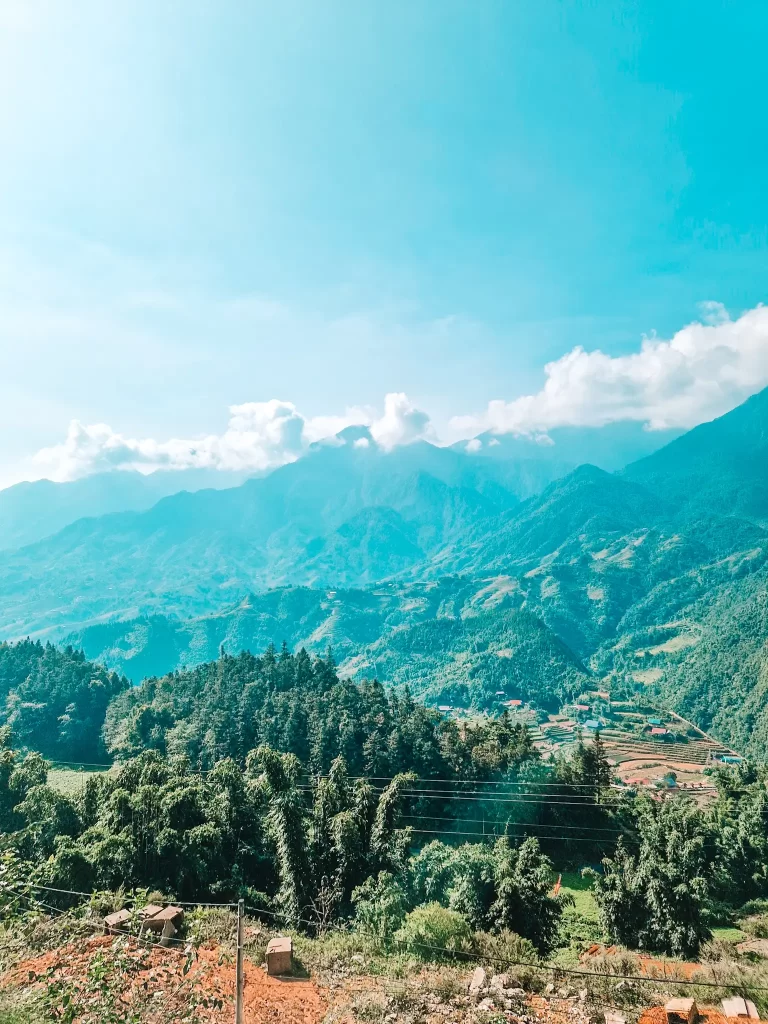
Is Sapa worth visiting?
Sapa is one of northern Vietnam’s most breathtaking destinations. Easily accessible from Hanoi, this mountain retreat feels a world away from the capital’s chaos. Here, mist-covered peaks, cascading rice terraces, and the rich traditions of ethnic minority groups create an unforgettable experience.
Like Ninh Binh, Sapa offers a welcome escape from the bustle of Hanoi and the tourist-packed beauty of Hoi An. It’s also a break from the tropical heat—perched in the mountains, Sapa enjoys a cooler climate and distinct seasons, a rarity in Vietnam’s lowlands.
Just beyond Sapa town, you’ll find remote villages, dramatic valleys, and sweeping vistas. Trekking or taking a motorbike tour is the best way to explore the region, often guided by local women from ethnic minority communities. This offers a rare, authentic insight into their traditions—and something you can only experience in a few parts of Asia, like Luang Prabang. After a day of adventure, unwind with a traditional herbal bath, a centuries-old remedy that leaves you refreshed and deeply connected to the local culture.
With two days in Sapa, you can experience all this and more. In this guide, I’ve laid out the perfect two day Sapa itinerary, and provided all the practical information you’ll need to enjoy it!
How many days should you spend in Sapa
A minimum of two days in Sapa is best to experience everything the area has to offer. This allows you time to visit the incredible Mount Fansipan, as well as getting out into the countryside to explore the mountains and learn more about the different ethnic groups living around Sapa.
If you have more time, there’s lots more to do! A third day in Sapa could be spent further exploring the area if you rent a motorbike. There are also mant ways to relax in the area, including traditional herbal baths and cafes with incredible views!
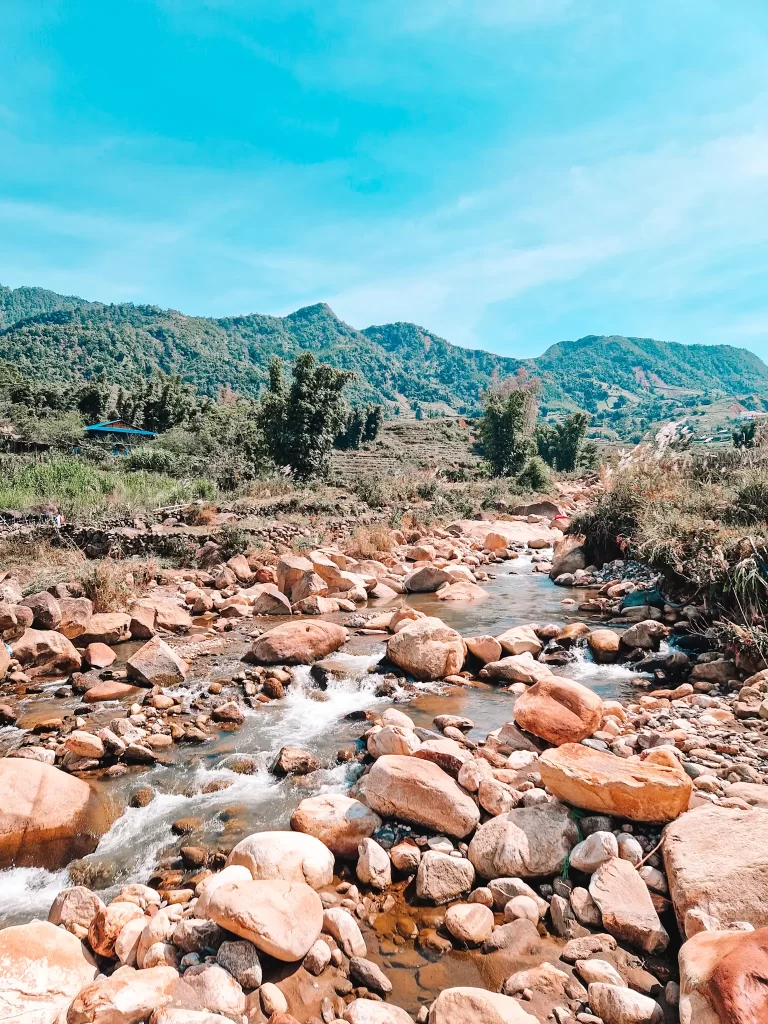
2 days in Sapa – the ultimate guide to this amazing region
I’ve assumed you have two full days in Sapa, but how you achieve this will depend on your itinerary, willingness to take night buses or trains and ability to function on little sleep! Your options are:
- Stay 1 or 2 nights in Sapa. Night bus or train to arrive early on Day 1, and either depart at night on Day 2 or the following morning. My experience was that arriving early from the night train was exhausting.
- Stay 2 nights in Sapa. Afternoon bus to arrive in the evening, spend the night and start refreshed on day 1. You could then take a night train or bus on Day 2.
- Stay 3 nights in Sapa. Take an afternoon bus, have two full days in Sapa and depart by bus the following morning.
Day 1: Views, Views and More Views
Stop 1: Take in the view at one of Sapa’s beautiful cafes
Start your day with breakfast or Vietnamese coffee at one of Sapa’s amazing cafes. Over the last few years, Sapa has become famous on social media for the stunning views from it’s mountainside cafes, and there’s definitely a reason for this.
The cafes are beautiful in the morning and have some of the best views in Sapa. You’ll find them surrounded by early morning cloud which slowly clears, giving you the sensation of drinking coffee in the clouds.
Many of the cafes also perch on the hillside looking towards the summit of Fansipan and sunset. This is a great way to take in the view with a sunset drink after you’ve climbed Fansipan later today.
My favourites were:
- White Cloud Coffee and Restaurant
- Fansipan Terrace Cafe
Both are easily accessible from the centre of town, though you’ll have a steep walk back. If you’re hiring a motorbike, there are many others to explore away from the centre of Sapa.
Stop 2: Visit Mount Fansipan
Cost:
- 850k VND Cable Car
- 150k VND Funicular one way
- 180k VND for train
Once you’re loaded up with caffeine and delicious food, it’s time to move on to today’s main event.
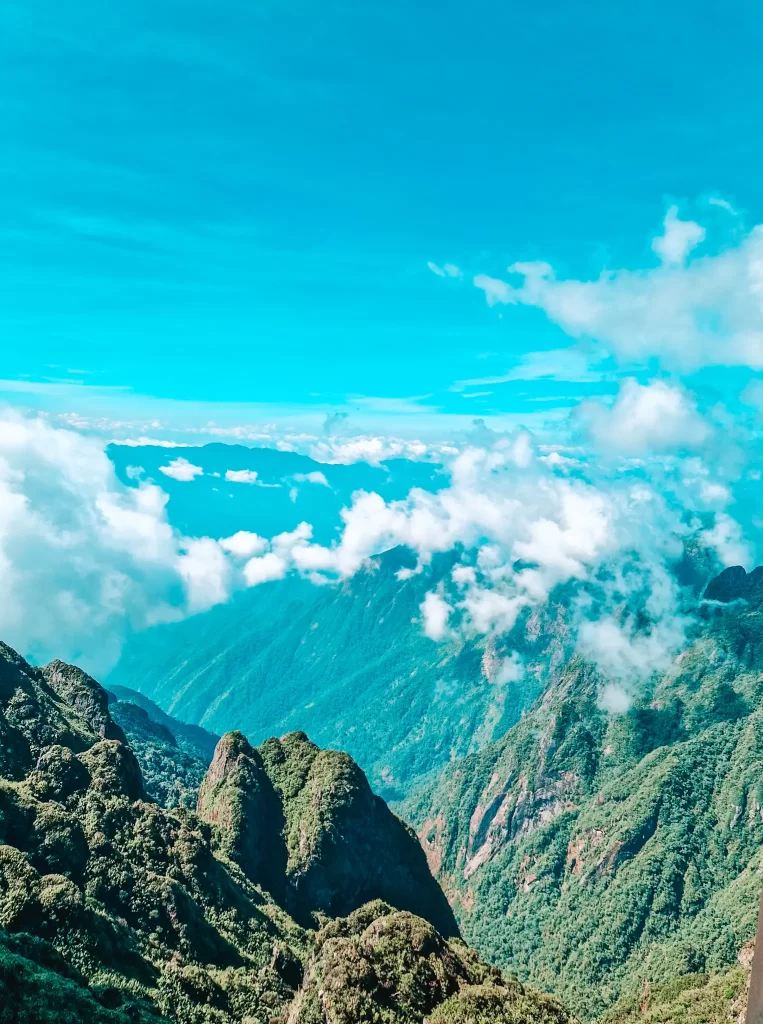
Mount Fansipan is absolutely the highlight of any trip to Sapa. Even though it’s the highest mountain in Indochina, the incredible feat of engineering that is the Fansipan Cable Car means that you can visit with almost no climbing. This is a unique opportunity to visit a 3147m high mountain without trekking! From the summit you get the best views in Sapa of the surrounding valleys, rice terraces and lush greenery!
There are three steps to the journey:
- The cable car
- The initial train from Sapa town to the cable car station
- The final funicular train (or climb)
Tickets
Mount Fansipan is run by Sunworld, a Vietnamese attraction company. Tickets are bought in person at the ticketing desk in central Sapa. You buy your tickets and then depart from the bright yellow Hotel de la Coupole – you can’t miss the building. Options include:
- Cable car only (note that you will need to organise transport from Sapa town to the cable car station)
- Train + Cable car
- Train + Cable car + 1 way Funicular
- Train + cable car + 2 way Funicular
There are over 600 steps between the cable car station and the summit. I strongly suggest taking the Funicular up and walking down the steps. (I did see people doing the walk up. The vast majority looked like they were severely regretting their life choices…)
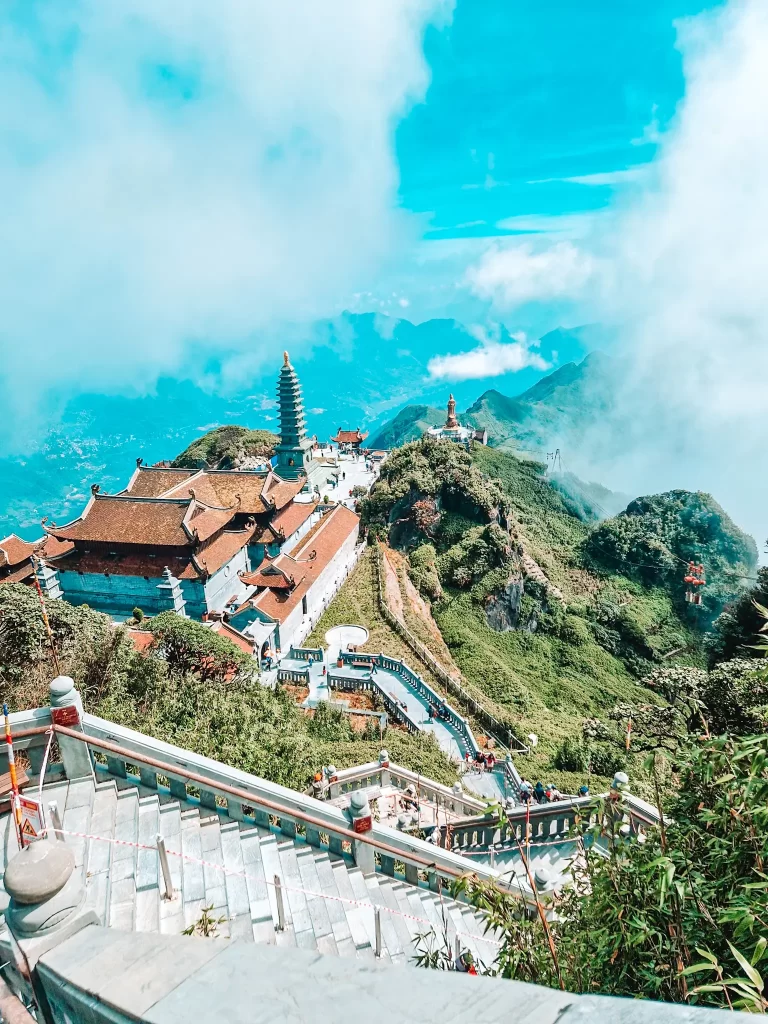
The experience
The journey between the cable car station and the summit includes a number of temples and statues, all of which are stunning. Like the giant statue of Lord Murugan at the Batu Caves in Malaysia, or the Lady Buddha near Da Nang, these are all new. It’s well worth doing the walk down to see these incredible feats of engineering. There are also restaurants at Fansipan, near the summit, the cable car station and at the bottom, so if you there over lunch you won’t starve!
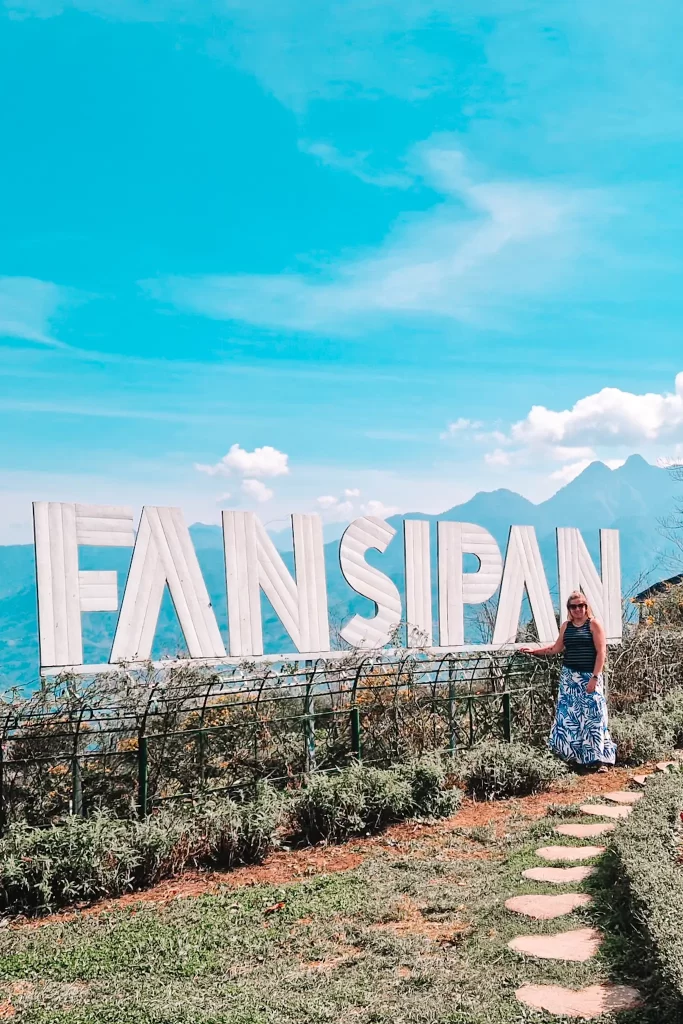
Visiting Fansipan is a bit of a marathon (or so it felt to me). I wrote a detailed guide to Fansipan, covering the different stages of the journey, more detail on ticketing options and what to expect at the summit.
Stop 3: Relax
Your trip to Fansipan will take up most of your day. The process of getting into the cable cars means a long wait, so it’s likely to be mid-afternoon before you arrive back in Sapa town.
As tomorrow will be a busy day, I recommend using the rest of your day to relax. There are a few options you could consider:
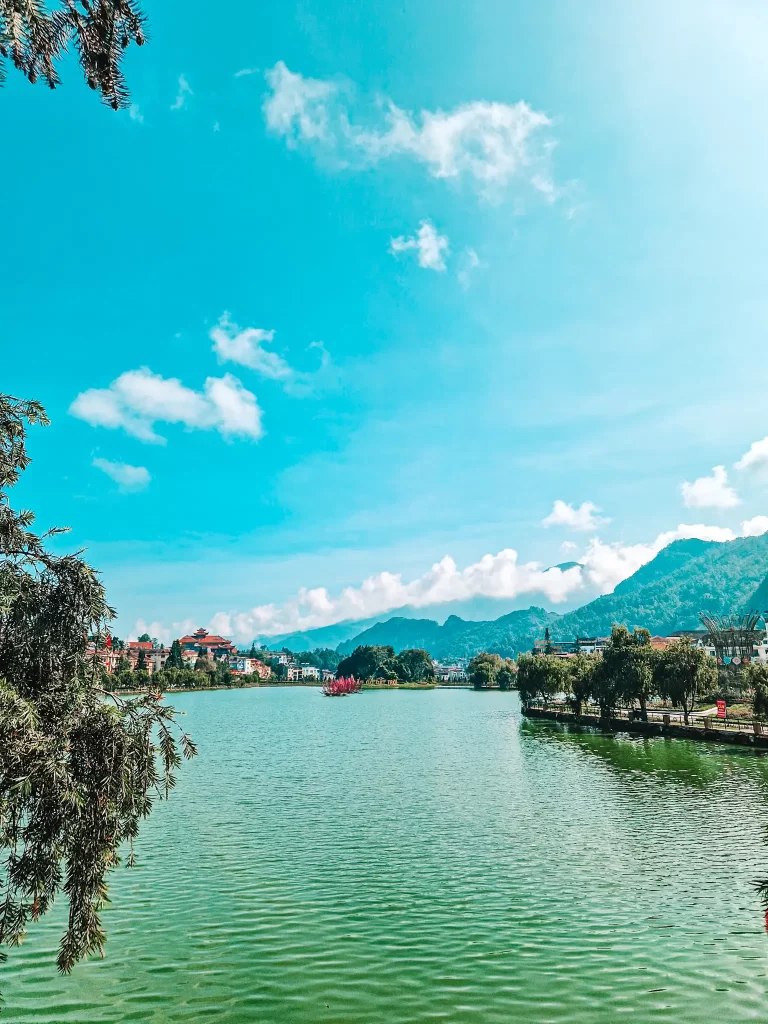
- Walking around the beautiful lake in Sapa Town and having a drink in one of the cafes
- Watching sunset over Mount Fansipan in one of the mountainside cafes
- Having a massage or herbal bath in one of Sapa’s many spas
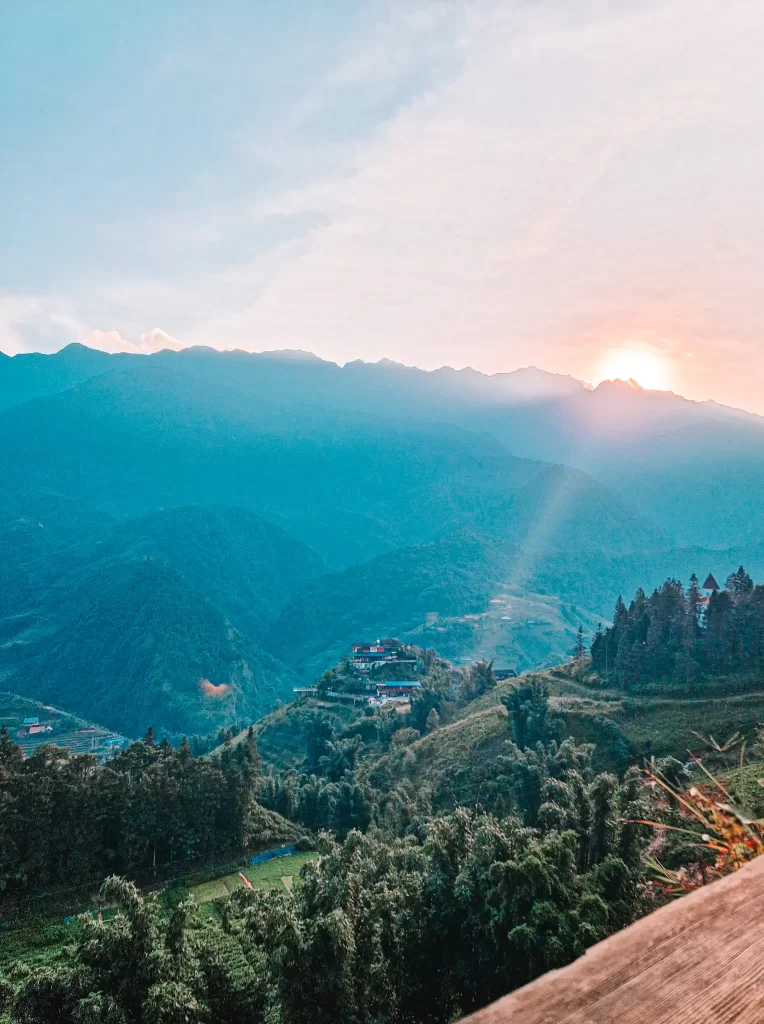
Alternatively, if you get back earlier than expected, you could consider a trip to Moana park (cost 80K VND or more, depending on the package you choose).
Moana park is an Instagram park on the outskirts of Sapa town. Many of the famous shots of Sapa you’ll recognise (the famous shot of tourists standing in the open palm of a hand, surrounded by clouds) are from Moana Park.
I chose not to visit Moana park. Having done some research, it was clear that this was a field of photo ops, which is a very popular concept across Vietnam and other parts of Asia. While the pictures can be impressive, I decided it wasn’t for me. However, it remains a popular attraction in Sapa, and worth considering if you have additional time on Day 1.
Day 2: Deep dive into the local countryside and culture via Easy Rider
Cost: $89 for a full day including lunch and personal drive/guide. If you want to take a herbal bath, this is extra
On your second day, it’s time to get away from the tourist crowds and out into the spectacular valleys and mountains of Sapa. I recommend taking an Easyrider tour – a motorbike tour where you ride as a passenger, with your driver acting as a guide. I used Sapa Motorbike Tours –1 Day off the beaten track, which was absolutely amazing.
Is an Easyrider tour safe
An Easyrider tour means you’re free to enjoy the view from the back of the bike, without having to worry about driving on Vietnam’s dodgy roads. My guide was an excellent driver, and I always felt safe, despite the state of the roads after the recent typhoon. She also checked in with me while driving to make sure I felt safe and comfortable.
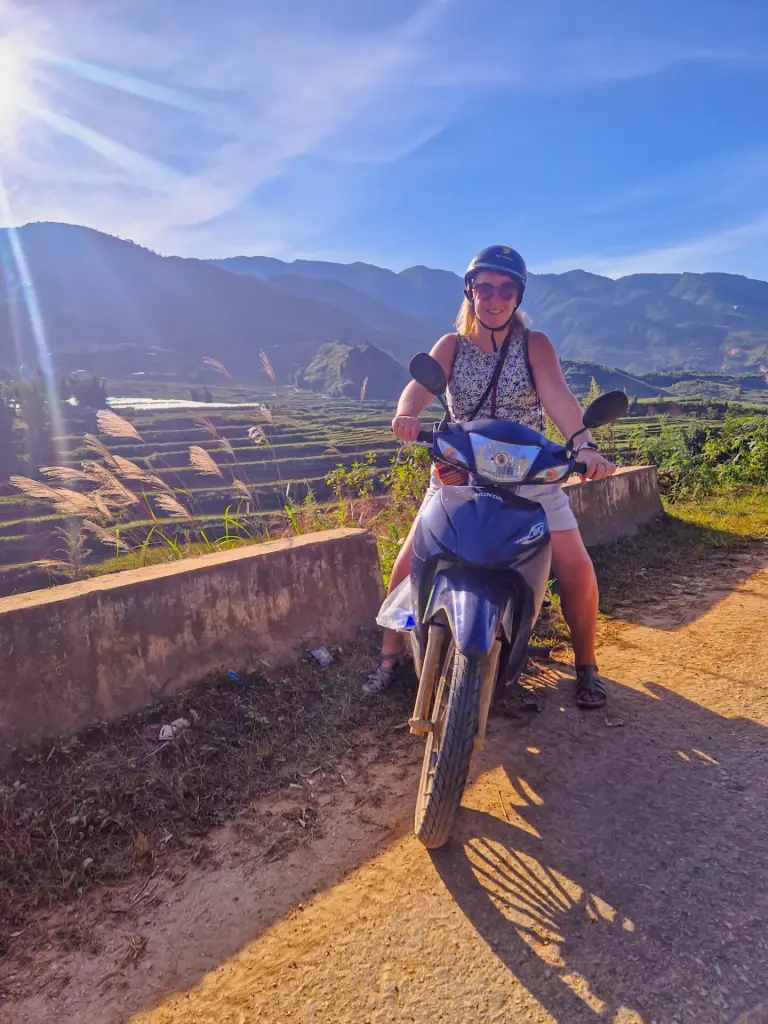
Understanding Sapa’s ethnic diversity
There are 54 recognised ethnic groups in Vietnam, with over 8 million people coming from ethnic minotires. Many of these groups live in the moutains around Sapa, with the H’mong as the biggest group in this area. My guide was from the Red Dao people, a group who arrived in Vietnam from China.
My guide took me to remote villages that I wouldn’t have reached on a typical one- or two-day trek. We visited her house to understand more about local life, including how her family grow orchids for local festivals. We ascended high into the mountains for breathtaking views.
We talked throughout the journey, and she constantly filled me in on the different villages, crops, and the differences between the varied ethnic groups in this part of Sapa. We also stopped at a local homestay for a delicious and filling lunch, as well as stopping for coffee in front of some stunning rice terraces early in the morning.
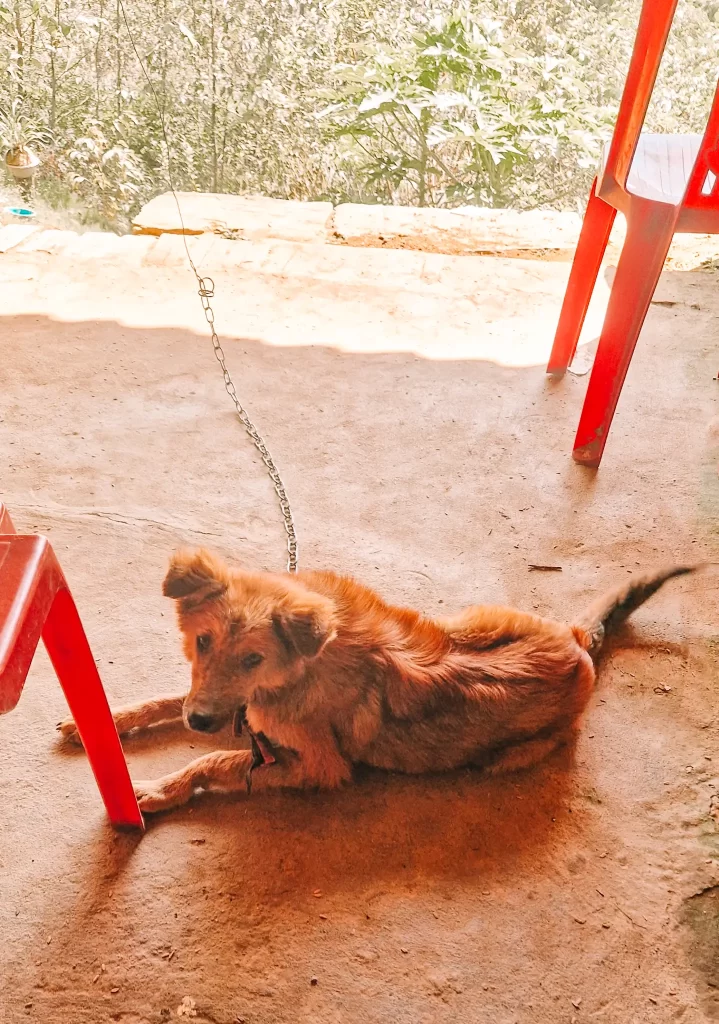
Herbal bath
If you didn’t have a herbal bath on Day 1, you’ll get the chance on your Easyrider tour! We visited a small family run site away from the hustle and bustle of central Sapa.
Sapa is famous for the medicinal herbal baths that the locals swear cure a variety of ailments. Taking one of these baths is a must-do while you’re in this part of Vietnam!
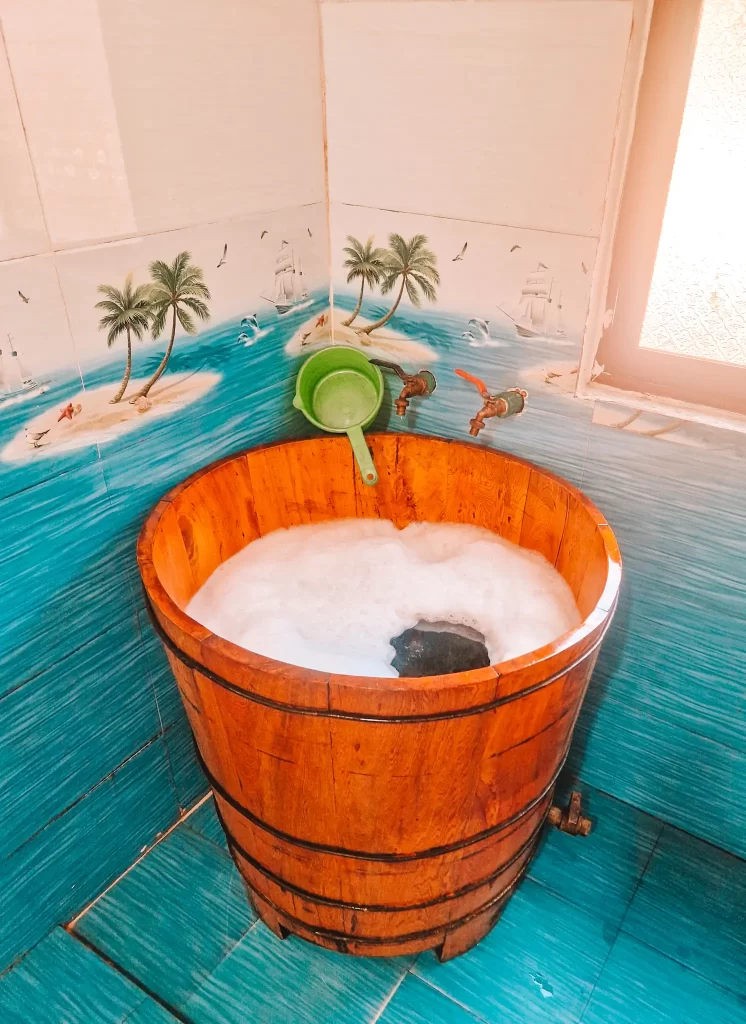
The baths are usually narrow and tall so that you can soak your whole body, although the place I visited had bigger baths available at extra cost. Baths are run very hot, and while it didn’t cure all my many ills, I certainly felt like it had helped soak out any aches in my muscles.
Day 2: alternative option
I chose not to go on a trek in Sapa, because I just don’t really like trekking! The Easyrider tour gave me the option to see everything I would have seen on a trek, and more, given we could cover greater distances.
However, this is without a doubt the most famous thing to do in Sapa. There are a variety of options, ranging from one day treks upwards. The most popular option is a two day trek, including an overnight stay at a homestay in the mountains.
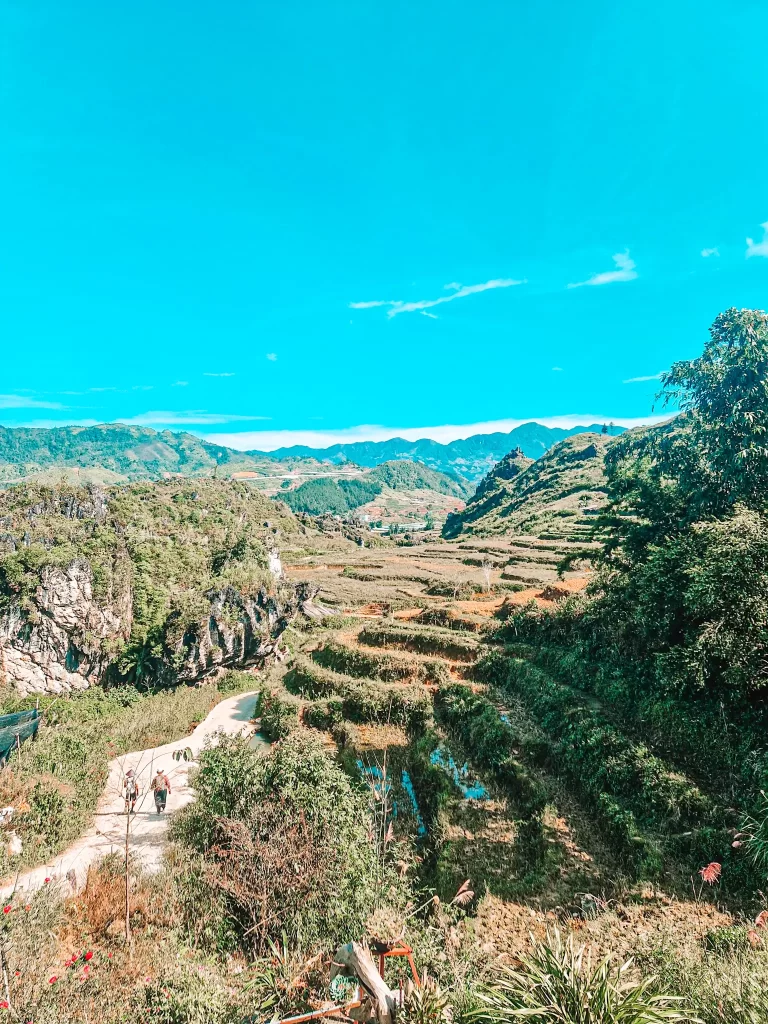
These tours are important because they give you the opportunity to get out of Sapa town and learn more about real life in the surrounding areas. Guides are usually local women from one of the many ethnic groups that surround Sapa. The treks provide important employment opportunities, as well as economic support via the homestays and restaurants that form part of the tours.
If you want to do one of these treks, your hotel in Sapa will be able to arrange this for you. You can also shop around at one of the many tour agencies in town, or book via Viator or Get your Guide.
Day 2: Evening
If you choose to do an Easyrider tour or a full day trek, you’ll arrive back into Sapa town not long before dinner time. I recommend using your evening to get some delicious food in Sapa – here are some of my recommendations:
Le Petit Gecko – a French inspired restaurant with a beautiful balcony that does both Western and local food
Little Sapa Restaurant – a small, family run restaurant with delicious food and an incredibly kind owner
Things I chose not to do: Cat Cat Village
Cost: 150,000 VND
Cat Cat Village is a tourist village located not far from Sapa town. It’s run by the local H’mong people and has lots of shops/stalls selling craft goods. There are also performances of traditional dances/songs. It was founded by the H’mong people in the 19th century, before being turned into a vacation spot by the French in the early 20th century.
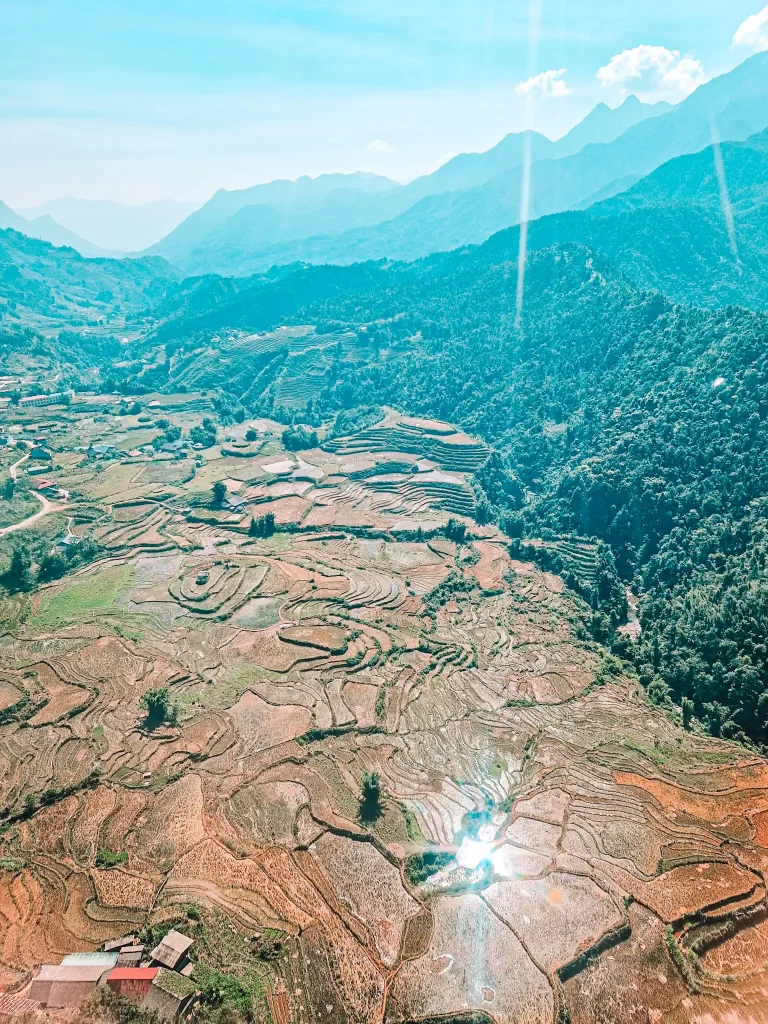
After doing research, I ultimately decided not to visit Cat Cat Village. If you choose to visit Cat Cat Village, you could make time on the afternoon of Day 1, making sure that you are back from Fansipan in time for a trip.
It has mixed reviews on TripAdvisor, with a score of 3.6. While I read that it’s a very pretty village, with a waterfall nearby, I also read that it is incredibly touristy. I saw reports that it was crowded, and full of people dressing up in the clothing of the H’mong people to take pictures, which makes me uncomfortable. I didn’t feel like it was going to give me a deeper understanding of the traditions of the H’mong people than I’d already gained on my motorbike tour.
Transport was also expensive for one person. Many tours and treks include Cat Cat Village, so it’s ultimately a personal choice.
Frequently asked questions
How to get to Sapa
You’ll most likely start your two days in Sapa from Hanoi, as this is the nearest major city. However, there are also buses available from destinations across central and northern Vietnam, including Ninh Binh and Hue.
Hanoi’s international airport is the gateway to flights to the south of Vietnam, as well as international destinations such as Singapore and Kuala Lumpur. Hanoi is also one of the starting points for travel to Vientiane in Laos, often next on many South East Asia itineraries!
There are two main transport options: bus and train. There isn’t much difference in timings between the two, so your choice is likely to be based on price and personal preference. I took both, and I’ve laid out the pros and cons below.
| Bus | Train | |
|---|---|---|
| Duration | Approximately 6h depending on traffic | 6h |
| Pros | Cheaper More timing options Comfortable beds on VIP buses Different price points available Can take a daytime bus Direct to Sapa, no transfer needed | Incredible bucket-list experience Luxury carriages, with different price points available Western toilets and sinks on board Breakfast served Safer than a bus While theft is still possible, you have more private space e.g. storage above the upper bunk or a lockable door if you choose a VIP cabin. |
| Cons | No toilet access/one toilet stop. Possible motion sickness. Driving in Vietnam is less safe than the train Safety – theft is possible on buses | Much more expensive Only one time available – night train. I found that the journey wasn’t long enough to get a good night’s sleep and spent the next day groggy. Arrives in Lao Cai and requires 45 minute bus journey at extra cost. |
What month is best to visit Sapa
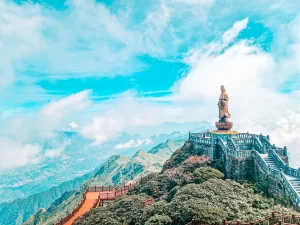
Unlike much of Southeast Asia, northern Vietnam has distinct seasons. Weather can strongly vary in Sapa at different times of the year. Temperatures can drop significantly, which might be a welcome change or something to avoid, depending on your preferences. Either way, knowing what to expect in Sapa can help you plan your trip, maximise your time and make sure you have the right clothes.
The best times to visit Sapa are considered to be spring and autumn.
Autumn (September-November), when I visited, was warm during the day and cooler at night. I didn’t experience rain when I was in Sapa, but this period is typhoon season in Vietnam. Just before I visited, Sapa had experienced the worst typhoon in 30 years, seeing significant damage to the surrounding areas.
Winter (December and January) can see actual cold temperatures, occasional snow, and frequent rain. It’s also likely to be misty, impeding your views of those beautiful mountains.
Spring (February- May) has temperatures between 10c-20c. Flowers and greenery bloom during this season, making Sapa particularly beautiful.
Summer (June to August) has temperatures over 20c. You can expect a high of around 24c, which is still significantly cooler than the lowlands of Vietnam at this time. There is also a high likelihood of rain.
Ultimately, when you visit will depend on your travel plans. The most important thing to remember is that Sapa has a different climate to Hanoi (your likely starting point).
What to pack to visit Sapa
Sapa has a different climate to lowland Vietnam and can experience significantly colder weather. If you are spending two days in Sapa, it’s also possible you’ll experience different weather on each day! Depending on the time of year you visit, you should bring:
Long trousers, particularly if you’re going to go trekking
Close-toed shoes (either walking boots or good trainers) in the colder months or if you’re planning to trek
Sandals that have a strap or stay on your feet – if you plan to do the Easyrider motorbike tour during the warmer months. This will help the shoes stay on your feet during long motorbike rides.
Cardigan or a lightweight jumper if visiting in spring or autumn
A proper coat or a warm sweater for winter
Cold weather clothes, including hat, gloves, scarf, if you’re visiting in winter
Lightweight waterproof
Luckily, if you misjudge, there are lots of shops in town offering suspiciously cheap outdoor gear from brands such as North Face.
Is there still damage from the typhoon
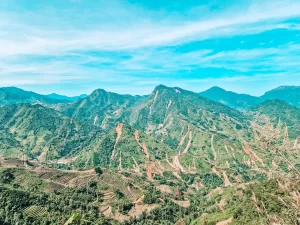
Sapa experienced its worst typhoon in 30 years, causing significant damage to the surrounding areas and tourism in Sapa was officially halted for weeks.
I visited in October 2024, as Sapa was opening back up. There was no damage in Sapa town (or it had all been fixed) but significant damage out in the surrounding villages. On my day long motorbike tour, I saw many areas where roads and houses had been damaged, and mudslides were clearly visible on many mountains.
However, while the roads were bumpy and slow as a result, it didn’t stop me from doing anything while I was there. There were government workers out fixing the roads, and while this is a medium-term project, there shouldn’t be anything to stop you making the most of your time in this beautiful part of Vietnam.
Bus from Hanoi to Sapa
I chose a VIP bus from HK Sapa for my return trip, booked through 12goasia. I did this journey during the day but had the full luxury sleeper bus experience. I chose a bottom bunk, which had a massage function! The bus was clean and we were given water when we got on.
If you choose a non-VIP sleeper bus, you will have significantly less space, with three beds per row compared to two beds on a VIP service. You’ll also have less privacy.
Train from Hanoi to Sapa
There are a number of private companies offering train carriages, which attach to the train run by the Vietnamese rail company and therefore all leave at the same time. This is 10pm for the trip from Hanoi to Sapa.
I chose the Chapa Express, and the train was beautiful, a really bucket-list experience. I wrote a detailed guide to my experiences on Vietnam overnight trains, which gives more information on how to choose the right company for you, how to book and what to expect.
How to get from Sapa to Halong Bay
Halong Bay is another amazing tourist destination in northern Vietnam, and will be part of many people’s itineraries. It’s easy to get to Sapa from Halong Bay or vice versa – there are a number of buses that take between 8-10 hours depending on the time of day.
You can choose between VIP Sleeper buses and luxury minivans. For a journey that long, I would suggest a sleeper bus if your budget allows. All buses can be found on 12goAsia.
Where to stay in Sapa
Sapa town: the most popular place to stay. When I visited Vietnam in 2010, only very serious hikers/trekkers went to Sapa! It’s now a busy, developing town, and for two days in Sapa, it’s the most practical place to stay:
Tours start from Sapa town
Close to the cable car to Fansipan
Lots of cheap restaurants, spas etc., and clothes stores if you forgot your raincoat!
Buses arrive and depart from the town
Countryside homestays: if you prefer a quieter, less overtly touristy experience, try a homestay out in the countryside. However, you’ll need your own transport, as there is no Grab Bike in Sapa.
Hotel options
Heart of Sapa Hotel – this was where I stayed and I would recommend it. It’s in the centre of town but on a quiet street. There were restaurants just across the street and it was only a few minutes from the cable car to Fansipan. It had spacious, clean rooms, a good breakfast, and a friendly host family. However, note that it is a tall building with stairs – if you have mobility issues ask for a room on a low floor or choose an alternative option.
Sapa Tatu Homestay – this has excellent reviews and is a little further from the centre of town, if you’re worried about being in the tourist noise of Sapa.
Sapa Relax Hotel and Spa – at a slightly higher price point, this has a beautiful roof terrace overlooking the mountains. Reviews are excellent and some rooms also have views
Hotel de la Coupole – if you really want to splash out, this hotel houses the Fansipan train, and is one of the most luxurious properties, right in central Sapa.
After two incredible days in Sapa, you’ll leave with a deeper appreciation for Vietnam’s natural beauty and cultural diversity. Whether you’ve stood atop Mount Fansipan, explored the lush green valleys, or simply enjoyed a coffee with a view, Sapa has a way of leaving a lasting impression. Two days in Sapa are enough to experience the highlights, but Sapa has a way of tempting visitors to stay longer. If time allows, consider extending your trip to explore even more hidden valleys and mountain trails. But even if you’re moving on, the memories of Sapa’s misty landscapes and warm hospitality will stay with you long after you’ve left.


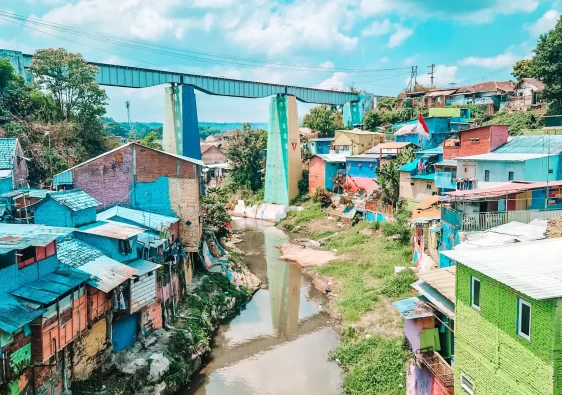
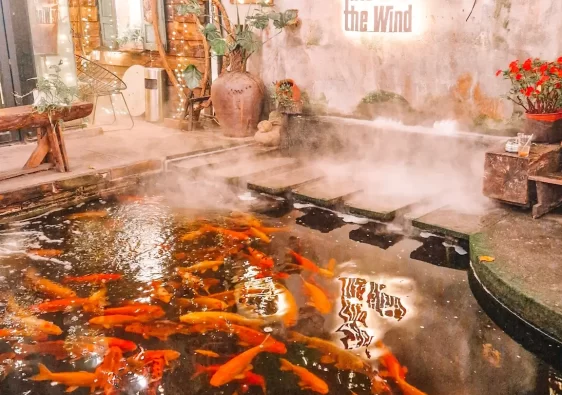
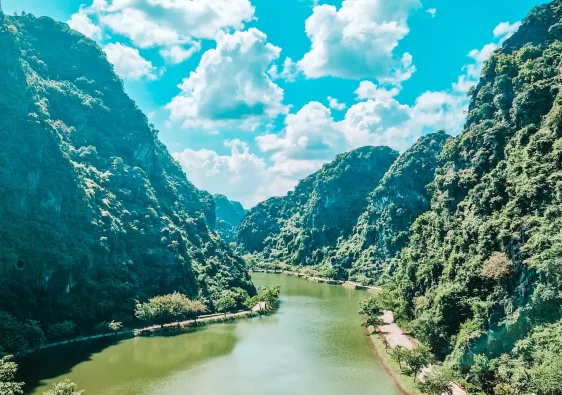
[…] Fansipan is absolutely the highlight of any trip to Sapa. As the highest mountain in Indochina, Mount Fansipan was once accessible only by a challenging […]